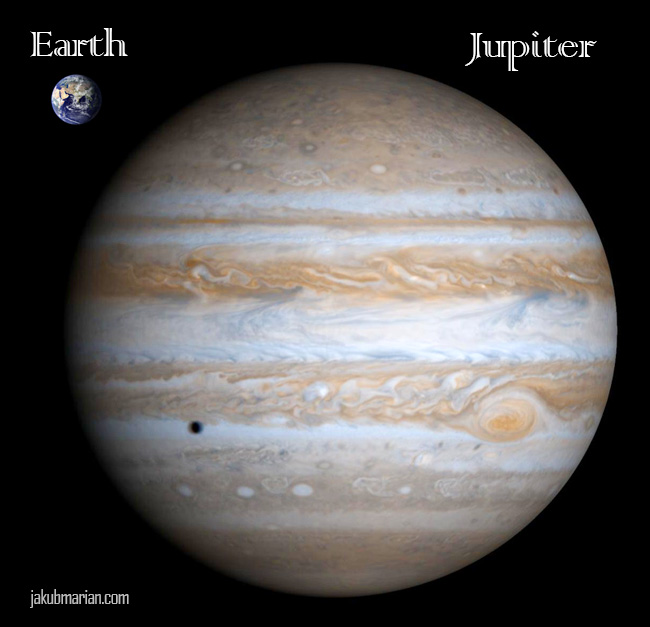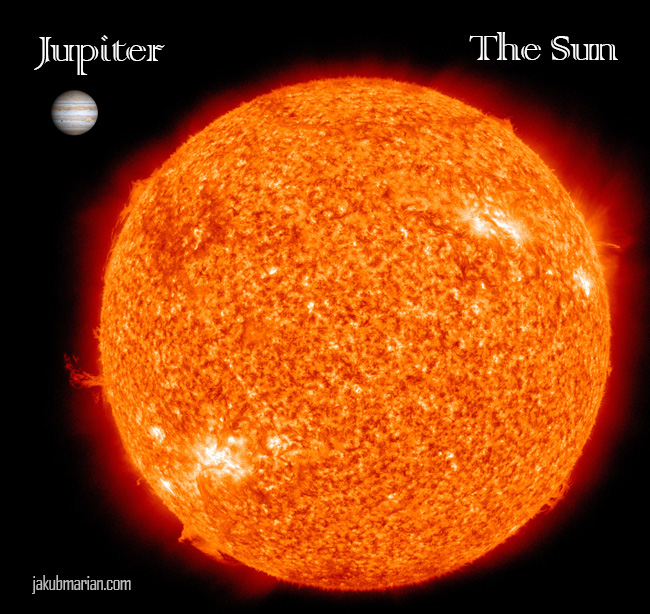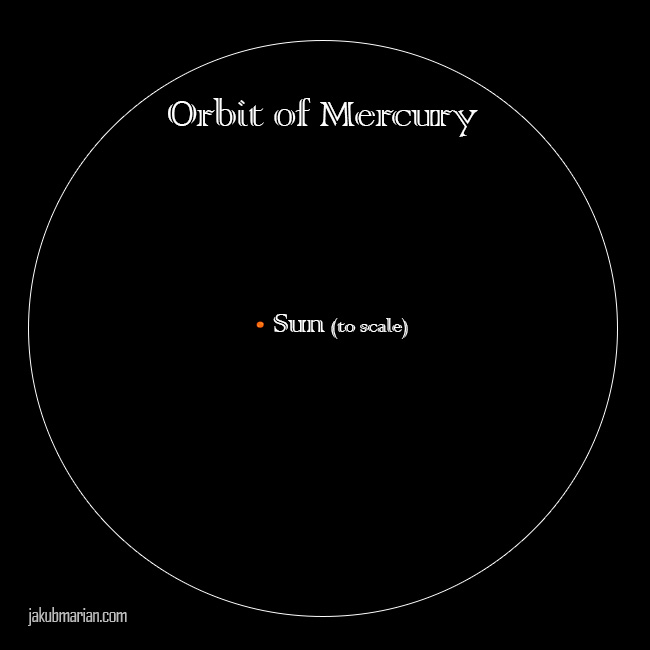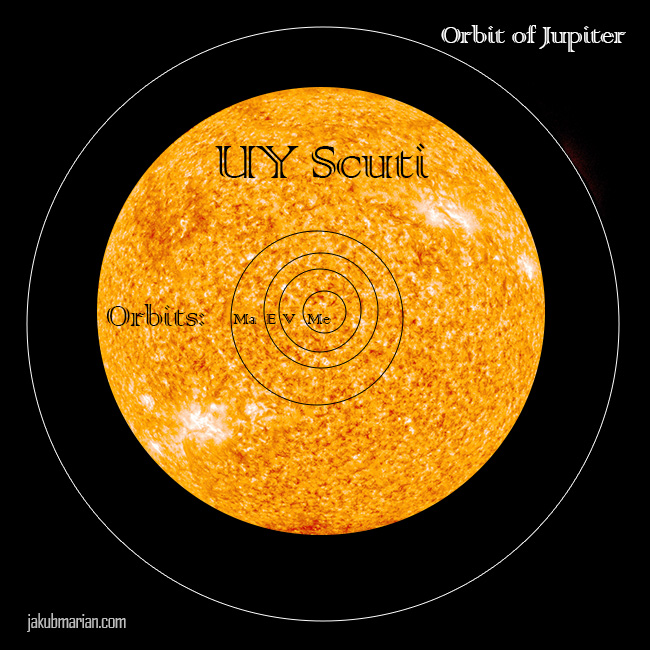Some objects in the Universe are huge, but it is hard to imagine how huge they really are. To help my readers with that, I made the following visualization, divided into 4 steps.
The first step is to compare the relative sizes of Earth and Jupiter (the diameter of Jupiter is about 11x the diameter of Earth):

The second step is to compare Jupiter and the Sun. The Sun’s diameter is about 10x the diameter of Jupiter:

What most people don’t realize is how empty our Solar System is. When we speak about Mercury, most people imagine a planet floating somewhere near the Sun, which looks like a huge ball of fire covering its whole sky. In reality, the Sun would look only about 3x bigger from Mercury than from Earth:

Finally, people usually think of planetary orbits as being quite equidistant, but this is also not the case. There’s a huge gap between the inner planets (Mercury, Venus, Earth, and Mars), and the outer planets (Jupiter, Saturn, Uranus, and Neptune), and this will make any manned mission to Jupiter much more complicated than a manned mission to Mars.
Anyway, if we replaced our Sun with UY Scuti (the largest known star, as of 2014), the result would look as follows:

Please note: This is not a real picture of UY Scuti. There are currently no telescopes able to provide an image bigger than a small dot. The picture used is a modified picture of the Sun.
 Tip: Are you a non-native English speaker? I have just finished creating a
Tip: Are you a non-native English speaker? I have just finished creating a  Web App
Web App
